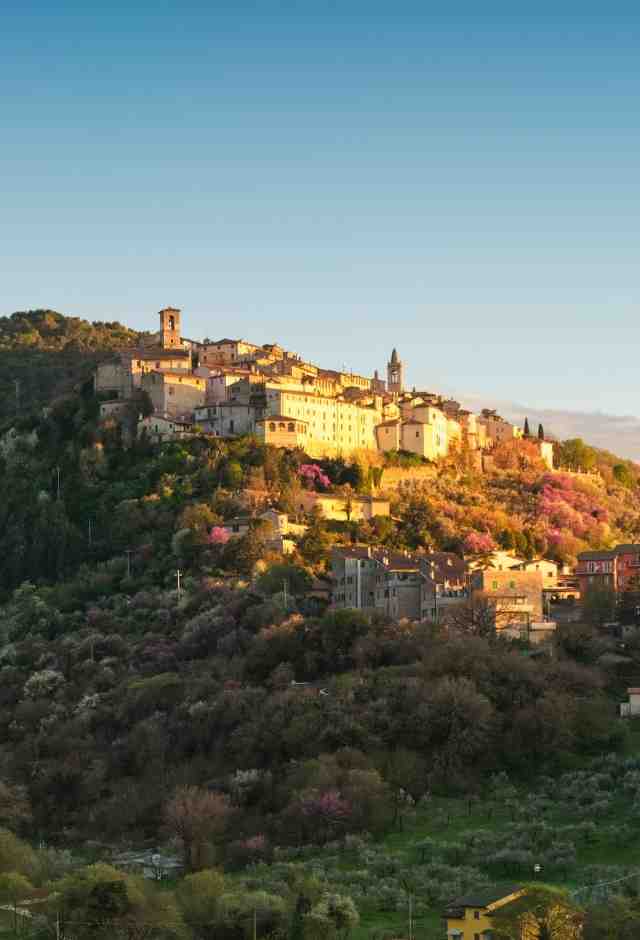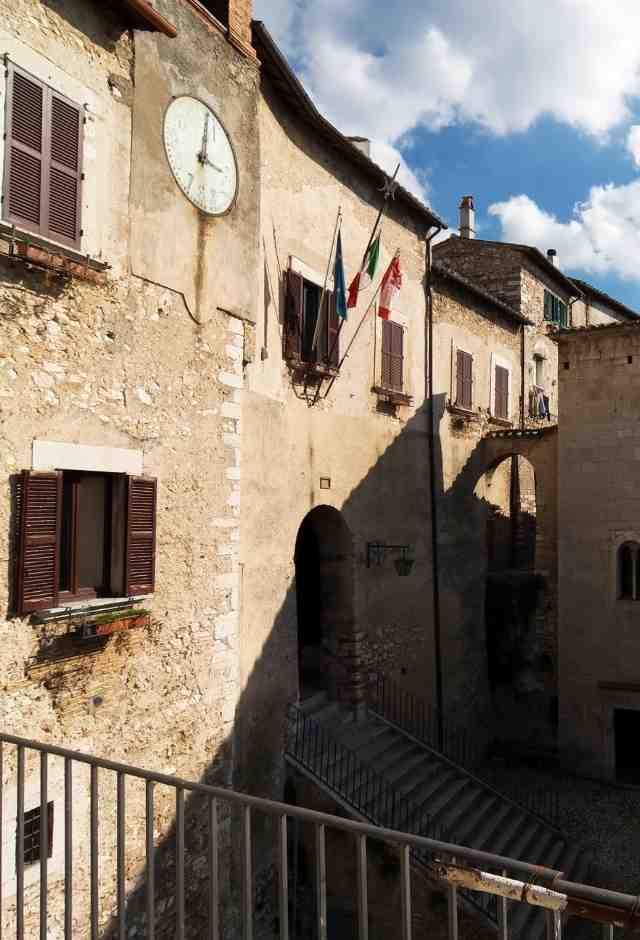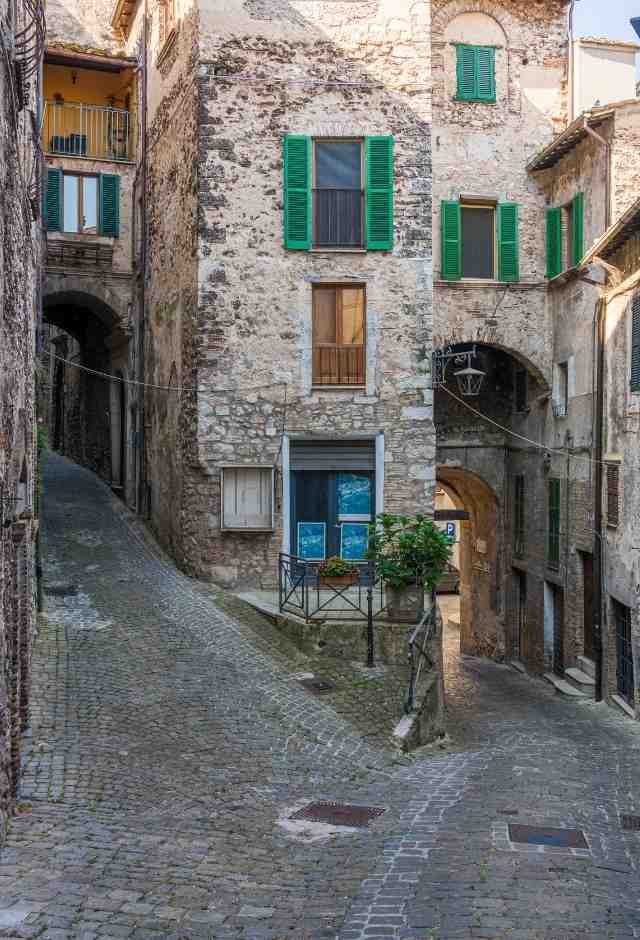With the fall of the Roman Empire and the invasions, some of the people went down to the valley, had to come back to the mountain in places more easily defensible.
We can assume p that between the VII and the VIII century, around what could be a watch tower to defend a diverticulum of Salaria, which from Rieti arrived at Terni, was born a first inhabit settlement.
Tradition wants that Castrum Hugonis, the Castro of the longboard duke Ugone, became Castrugone, Strungone and at the end Stroncone.
A document of 12012 attested for the first time the existence of the castle: in the text, Giovanni di Pietro gave to the Monastery of San Simeone, its possessions inside the castle, even the Oratory of San Michele Arcangelo.
Already in the XI century, the settlement was defined: a castle with a fortress, the fortifications , the walls and inside houses, squares and religious places.
The strategic position , placed the settlement immediately in the eyes of Narni wich in 1215 occupied it devastating its defenses, but already in the same year Innocenzo III forces the people of Narni to rebuilt and render Stroncone free municipality of guelphs part, like demonstrated the papal keys which, even today, are in the coat of arm of the same municipality.
Beside Narni , for rejecting the forces of Federico II, for this reason he saw himself recognized the privilege of free land subjected directly to the Vatican.
The events between guelphs and ghibellines interested the municipality in the XIV and in the XV century.
Stroncone, like other Guelphs territories, suffered heavy damage after the passage of Lanzichenecchu , in the first part of 1500. Some evidence relative to the subsequent rebuild, are even now appreciated in some buildings and especially in the walls and in the Palazzo Comunale.
Stroncone was able to be an important political and economic centre , thanks to the straight influence made by the minor friars, who favoured even the birth of a Piety Monastery and of a frumentary mountain, with the explicit scope of fighting the illegal and immoral activities.
In the XVI century the lands of Stroncone were governed by the cardinal of the Sacred College, while at the end of the same century, thanks to the administrative reform of the Papale State, passed directly under the control of the Apostolic Chamber.
Probably this is the reason for which beside the Palace of Priors the Govern palace, was built even the Apostolic palace.
Stroncone, after some fights for the Unit of Italy, became territory of Terni, reaching the autonomy only after the Second World War, in 1947.





